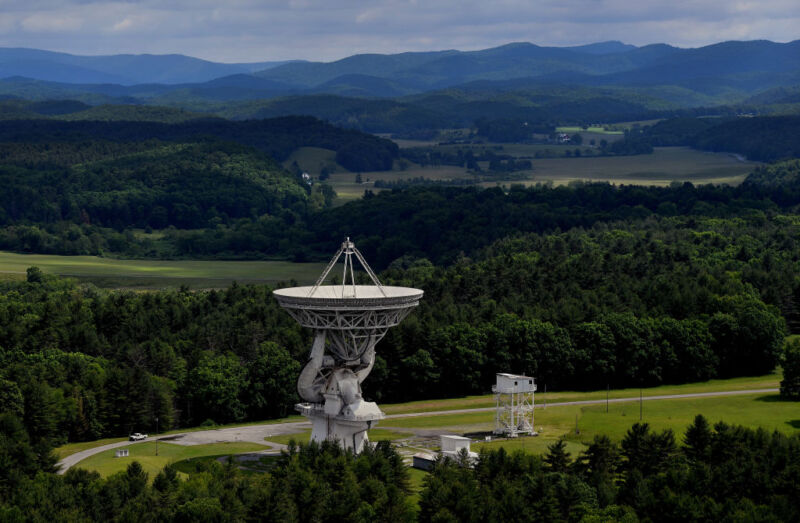Radio interference from satellites is threatening astronomy

Enlarge / Radio observatories like the Green Bank Telescope in Green Bank, West Virginia, are in radio quiet zones that protect them from interference. (credit: The Washington Post via Getty Images)
Visible light is just one part of the electromagnetic spectrum that astronomers use to study the Universe. The James Webb Space Telescope was built to see infrared light, other space telescopes capture X-ray images, and observatories like the Green Bank Telescope, the Very Large Array, the Atacama Large Millimeter Array, and dozens of other observatories around the world work at radio wavelengths.
Radio telescopes are facing a problem. All satellites, whatever their function, use radio waves to transmit information to the surface of the Earth. Just as light pollution can hide a starry night sky, radio transmissions can swamp out the radio waves astronomers use to learn about black holes, newly forming stars, and the evolution of galaxies.
We are three scientists who work in astronomy and wireless technology. With tens of thousands of satellites expected to go into orbit in the coming years and increasing use on the ground, the radio spectrum is getting crowded. Radio quiet zones-regions, usually located in remote areas, where ground-based radio transmissions are limited or prohibited-have protected radio astronomy in the past.